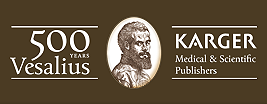
edical illustration has a long history, Vesalius was certainly not the first to make use of it and since his time, the art of medical illustration has developed a great deal. Today new technologies bring new opportunities.
What are the origins of medical illustration and how has it evolved?
Eastern and Western medicine began with similar fusions of religion, spirituality, and science. Anatomists resorted to analogies of the universe to explain the body. Ancient Chinese illustrations and Arabic illuminated manuscripts can look odd to modern eyes, however, since they reflect reliance on classic scholarship rather than direct observation, and therefore the representation of the internal structures can be fanciful.
Medical illustration for instruction first appeared in Hellenic Alexandria during the early 3rd century B.C. Created on sheets of papyrus, Hellenic illustration covered anatomy, surgery, obstetrics and plants that had medical properties. Graceful anatomical figures were often posed dramatically in landscapes amid pieces of classical architecture, in startling contrast to the bare backgrounds of earlier and later illustrations.
The Renaissance gave us Leonardo da Vinci, the first medical illustrator in the contemporary sense. Stunningly inventive, he melded a scientific understanding of anatomy and great artistic skill. Not long after Leonardo died, Andreas Vesalius began his medical career and created and published De humani corporis fabrica, possibly the best-known book of anatomy of all time. It influenced medical illustration for centuries. While much is known about Vesalius and the printing of the Fabrica, little is known about the artists who illustrated it, including Jan Stephan von Calcar (a student of the Italian Renaissance artist Titian, he is considered likely to have created some of the illustrations in the Fabrica).
In the 19th century, new printing techniques allowed illustrators to work in a variety of media. Color printing was refined and became readily available, helping to make possible colorful atlases of pathology and anatomy. In the 20th century, publishing became much easier and more direct with digital files and software editing programs both for text and illustrations. With easy access to the Internet, research is now at our fingertips, much to the great advantage of the medical artist.
What tools or technologies are involved in medical illustration today?
Most medical illustrators have now gone digital, though some still work with traditional media such as watercolor, pen and ink, graphite, etc. Both approaches, however, demand the use of hand-drawn sketches and observations. These are then scanned into editing programs, including Adobe Photoshop and Illustrator and 3-D programs such as Maya, Cinema 4D, 3D sculpting programs, 3D scanning devices and 3D printers.
How does this compare to the techniques of the trade in the past?
The techniques of the past included woodblock cutting, lithography, etching and wax sculpting. It was much more difficult to edit an artwork, as was preserving the different stages of the illustrations. These problems have become a thing of the past. Now one can enlarge and reduce artworks with ease, work in layers and press the undo button when a mistake has been made.
Could you describe any trends you see developing for the future?
3D printing will be an incredible new tool. Holographic projections and Google Glass might also be an asset in the field of art and science.
Who do you consider to be the finest medical illustrators and/or artists over the centuries?
Da Vinci, Vesalius and von Calcar must be my all-time favorite medical artists, as they were pioneers, geniuses and great visionaries. They have been a great inspiration to people in medicine and artists alike over several centuries, widening our understanding of the human body and the physical world. There are a number of other artists that I would like to mention: Bernhard Siegfried Albinus, Jan Wandelaar, Govert Bidloo, Jan van Rymsdyk, Frederik Ruysch, Albrecht Dürer, Ernst Haeckel, Joseph Towne, and all the wax sculptures from the Museo di Storia Naturale "La Specola" in Florence.
They are all true inspirations.
What do you think makes these illustrators and artists and their work great?
They were pioneers, in that they looked at life with an open mind, free from all preconceptions. They observed the world and physical life in all its wonder and splendor, ever questioning all previous knowledge, inquisitive and possessed with the art and talent to communicate their visions. Their passion to find answers and record their views shines through in every line and in every word. It is these traits that make their work so revolutionary and great.
